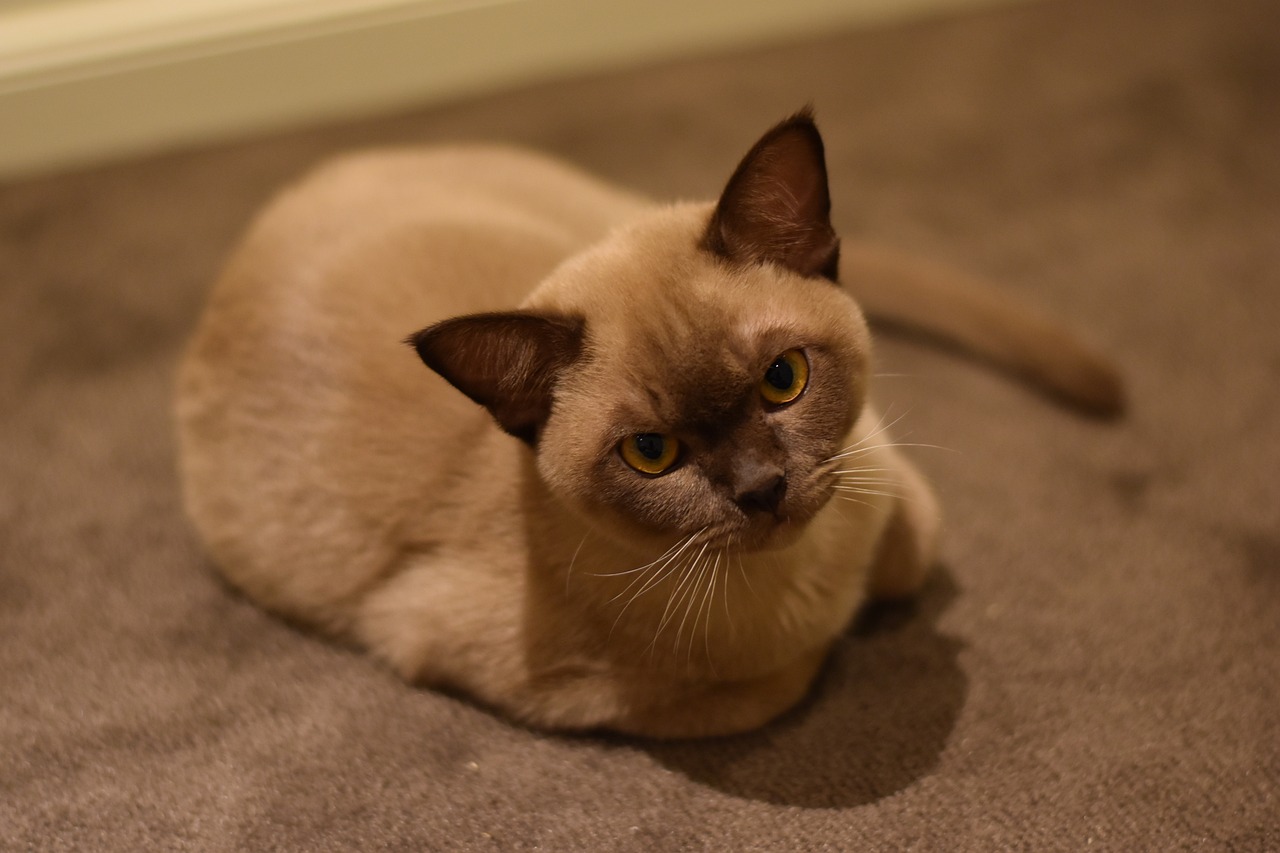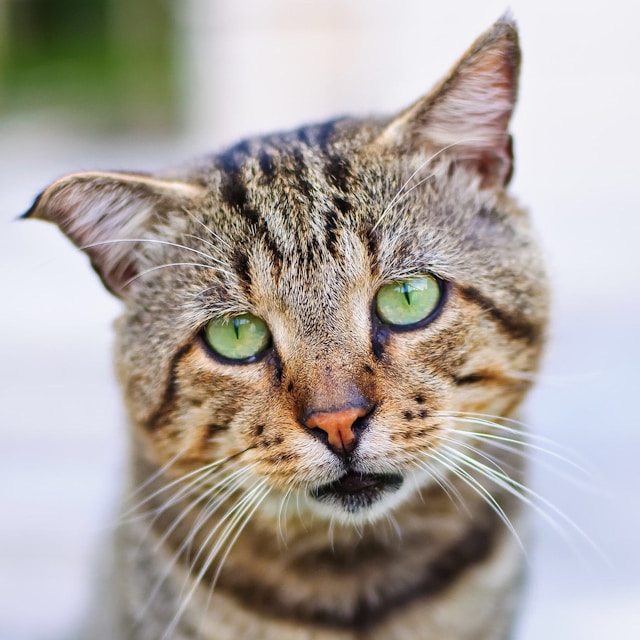Burmese

| OFFICIAL NAME | Burmese |
| COMMON NAME | Burmese |
| PET HEIGHT | 9 to 13 inches |
| PET WEIGHT | 8 to 15 pounds |
| LIFESPAN | 10 to 17 years |
| GOOD WITH | cats, children, dogs, families, seniors |
| TEMPERAMENT | affectionate, sociable |
| INTELLIGENCE | high |
| SHEDDING AMOUNT | seasonal |
| PLAYFULNESS | high |
| ENERGY LEVEL | active |
| VOCAL LEVEL | frequent |
| COAT LENGTH | short |
| COLORS | blue/gray, chocolate/ brown/sable, lavender/silver, lilac |
| OTHER TRAITS |
easy to groom, friendly toward humans, friendly toward other pets, friendly toward strangers, good for first-time pet owners, strong loyalty tendencies, tolerates being picked up |
These cats are playful and clever, and they are adorable. They quickly become the social partners of their human friends because they like playing interactive games like fetch and tag. Even the most skeptical of cat skeptics are frequently won over by their loving disposition and dog-like characteristics. It makes sense that Burmese cats are alluring to so many people, given their charming demeanor and striking appearance, reminiscent of a painting by Margaret Keane.
Burmese Appearance
There are two types of Burmese cats, depending on where you live. Though the American and European Burmese share a common ancestor and are recognized by most cat registries as a single breed, there are discernible differences between the two.
The European Burmese, sometimes called "traditional," are generally thinner. They feature almond-shaped eyes, tiny, pointed ears, and a wedge-shaped head. On the other hand, the American Burmese, sometimes referred to as "contemporary," tend to be stockier. Compared to the European type, they have a wider head, slightly wider ears at the base, and rounder, more expressive eyes.
A common characteristic of all Burmese cats is their extremely short, silky coats, typically solid in color. Burmese cats were originally mostly sable in color. However, other hues like lilac, blue, and fawn emerged in the middle of the 20th century. Currently, the British standard accepts patterns based on brown, chocolate, blue, lilac, red, cream, and tortoiseshell as solid colors. However, Burmese cats are still recognized by the Cat Fanciers' Association (CFA) standard mainly in the colors solid sable, blue, champagne (chocolate), and platinum (lilac).
Burmese Personality
The Burmese cat is well-known for its lovable and charming nature. It frequently gives off a lovely innocence that makes it very appealing to people. It is not very demanding, but it does enjoy spending time with its human companions and builds strong bonds with them. It can get lonely, so you shouldn't leave it alone for long.
Playful and friendly, Burmese cats frequently like games like fetching toys or creating their own games. They exhibit bravery and a lively personality from kittenhood into adulthood. As they get older, their confidence and intelligence show more clearly, and some of them—especially the female Burmese—may even declare themselves to be the head of the home.
Burmese cats tend to be quiet but are good at expressing what they want. They eagerly seek lap time and affection opportunities and enjoy following their humans around the house. Because of their trusting nature, they are best kept indoors to ensure their safety.
Burmese cats are excellent indoor pets for people who value their loving charm. They have a gentle disposition, are playful, and are caring.
Burmese Living Needs
Burmese cats are happiest when they are close to you, whether playing or relaxing on the couch. They become devoted to you immediately and want to always be in your presence. Your Burmese will probably climb into your lap for a nap if it's empty, says Dr. M. Leanne Lilly of the Ohio State University Veterinary Medical Center.
Assume you will need a hammock and a cat tree when you bring a Burmese kitten home. Burmese kittens also enjoy sleeping in warm, raised areas. However, anticipate that they will only sleep for part of the day. They like playing with toys resembling mice and birds and watching wildlife through a sunny window.
Burmese cats should always be kept indoors. They can get upset without their humans because they are so attached to them. If your cat tries to run outside, you should build a catio or use a harness for supervised outdoor playtime so they can enjoy the outdoors without risk.
Burmese Care
Burmese cats have extremely short coats that shed very little, making them easy to groom. You won't need to brush or bathe them very often except for a bit of combing in the spring and fall during the shedding seasons.
Like with any cat, be sure to clip their nails and maintain a clean litter box regularly. Maintaining the health and happiness of your Burmese cat also requires routine veterinary examinations.
Burmese Health
Burmese cats are generally healthy, though, like any cat, they can be prone to specific health issues.
Compared to other breeds, they are more likely to develop diabetes mellitus. In addition, they may experience genetic hypokalemia, low blood potassium levels, and feline orofacial pain syndrome. A proper diet can help manage many of these conditions.
Burmese Exercise Requirements
It doesn't matter if you don't walk your cat; they still require exercise. To keep them active, ensure they have many places to climb and play with them frequently.
Many interactive cat toys are great for moving your cat, but laser pointers are also great. Play with your cat on the floor without hesitation. If your cat is involved in any activity that keeps it active, it will be healthy and happy.
Burmese Training
Your cat may never learn many new tricks, but teaching them the fundamentals is usually relatively easy. Burmese cats can be trained to stop scratching objects they shouldn't and are generally easy to litterbox train.
The best action is redirecting their behavior and showing them where to relieve themselves or itch. Try not to get upset or yell at them when they misbehave or have accidents. This will only make them hide from you rather than get it right. If you gently lead them, they will learn where they should and shouldn't go.
Burmese History
After being transported from Burma to San Francisco in 1930, a lone brown female named Wong Mau is the ancestor of the Burmese cat we know and love today. The Burmese breed was established by mating Wong Mau with Tai Mau, a seal point Siamese, and then back to the males of that litter.
In 1936, the Cat Fanciers' Association (CFA) granted the breed its initial recognition. However, the CFA suspended the breed's recognition in 1946 due to widespread crossbreeding with Siamese cats to boost their numbers. 1954, the acknowledgment was reinstated following breeders' accomplishment of three generations of pure Burmese litters.
The primary method used to develop the European Burmese during the 1940s was crossbreeding Tonkinese, Siamese, and some imported American Burmese. By 1952, the breed had gained enough acceptance to be recognized by the UK's Governing Council of the Cat Fancy. Most European and Commonwealth nations follow British standards when breeding Burmese cats.
Burmese Fun Facts
Burmese cats are famous for being heavier than they appear, often described as "bricks wrapped in silk" due to their solid builds and sleek coats.
Their ancestors came from Thailand, where they were kept in monasteries.
Get insurance plans with wide-ranging coverage options













